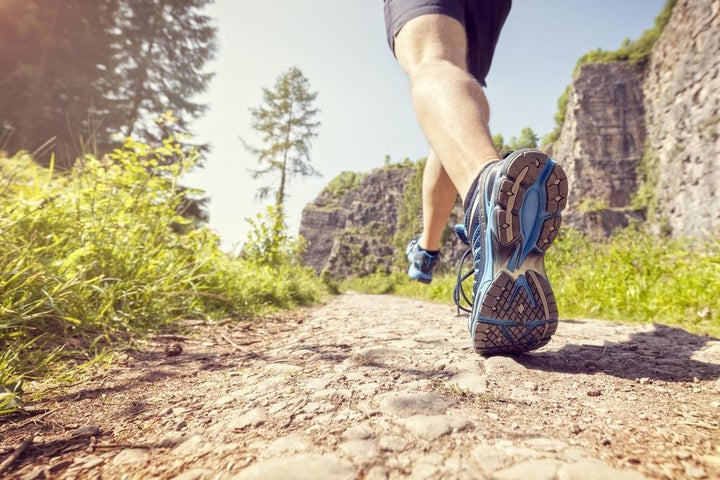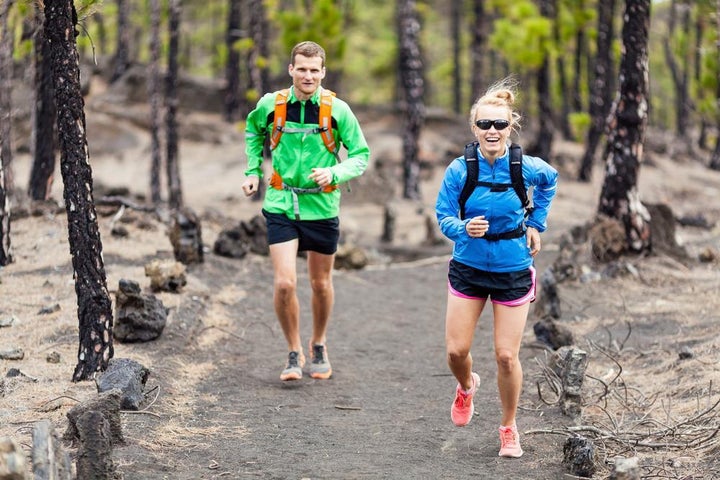
If you’re an avid runner who’s looking for your next adventure run, then why not try hitting the trails? You’ve already exhausted your workouts at the beach and on the pavement around your neighborhood, and now it’s time you give the dirt road a go!
In this article, we’ll break down ways in which you can conquer trail runs; we’ll offer you tips on what equipment you can get as well as provide you ways on how to get started. Soon enough, you’ll be tackling those challenging trails like the dedicated runner you are. Let’s get started!
1. Get trail shoes.
While your normal running shoes might work for trail runs, you might want to consider investing in a pair of trail shoes, especially if you’ll be going for long runs on there. These particular shoes offer a thicker protective sole from sharp objects like rocks or twigs (common on trails) as well as enhanced stability features for combatting those soft, uneven surfaces.
If anything, trail shoes are a great way to keep your feet safe while also offering comfort and cushion just like regular running shoes to run your best. Here are some suggestions to get you started.

2. Consider using insect repellent.
Although not one hundred percent necessary, it’s nevertheless still a good idea to apply some insect repellent to ward off potential bugs in your backpack while running. Trails can have insects and other little critters that hide underneath the leaves and crawl along the trees, so taking measures to avoiding them from getting on your body (and from receiving subsequent tick bites) is the good way to go.
You don’t need to apply too much of the insect repellent to your body, but make sure to get it particularly around your lower legs and ankles, as those are the areas that potential insects have the best access to you.
3. Find trails around your area.
Begin researching potential trails that you can run on that are preferably not too far from home: ask some of your trail-loving friends if they know of some good places, and scour the Internet for some recommended trails on websites such as the American Trail Running Association.
Make sure you also look into whether you would like to run a technical or a non-technical trail: the former is more of the nature side with uneven, challenging surfaces while the latter often are those with smooth, well-paved paths.
4. Bring your cellphone.
Especially if you’ll be running alone, then it’s best to carry your cellphone or some other communication device in case something was to happen to you along the trail. You never know what’s out there, particularly if you’ve never ran on that trail, so it’s always good to take that extra precaution if an emergency were to arise.
Also, telling your friends and family members beforehand that you’ll be hitting the trails is not a bad way to go about it; in the end, it’s better to be safe than sorry!
Now that you have all of your equipment and trail in mind, let’s discuss some things you can do while on the trail in order to facilitate a safe, smooth, and overall pleasant run:

1. Take it easy.
When it comes to running on trails, know beforehand that it’s expected you’ll be running naturally slower than you normally do on other surfaces such as asphalt or concrete. In fact, you can probably expect your speed to decrease by 10 to 20 percent, as you’ll need to plow through items such as leaves and twigs, step over rocks and roots which may or may not be hidden underneath the leaves, and otherwise have to contend with the soft, sinking dirt ground that’s nowhere near as stable as pavement. That said, don’t stress yourself out by pushing too hard to remain at your normal running speed; not only will it exhaust you quickly, but also it won’t be effective in the long run, literally. Go slow, take shorter strides, and be patient with the progress. We guarantee that you’ll make it through!
2. Look ahead of you.
As it goes with soft, uneven ground, trails are definitely challenging in that they’re unexpected objects that pop up when they’re least expected on your run. Whether it’s a large ditch or wet, muddy ground, taking extra care to look ahead of you is good for preventing any problems from happening; you certainly don’t want to accidentally trip on an overgrown tree root or step off a rock in a wrong way that sprains your ankle, especially in the middle of your run!
3. Be mindful of slopes.
On some trails, you might come across some slopes, which puts extra stress on the trail running experience itself. Again, the best thing to do is not push yourself too hard on them, for doing so tires you out more quickly and makes it difficult for you to continue a consistent pace for the rest of the run. Take small strides on the uphill while taking your time; there’s no need to rush! As for the downhill, don’t go too fast, as it can put extra pressure on the hips and joints. Find a balance between the two sides of the slope and remember that patience is key to doing well.
4. Stay safe.
This is a no-brainer, especially when trails tend to be more remote and challenging areas for running. As always, be careful when stepping over and under roots and branches, respectively, as well as have some sort of emergency item on you (e.g., cellphone) in case something comes up that you need assistance. After all, being safe is just as important as getting in shape!
Conclusion
When it comes to challenging yourself, trail runs are an excellent alternative to those along the beach or concrete. Unlike sand or pavement, trails contain lots of loose dirt, leaves, and other factors to make you more aware with each step, so that you can push yourself even further to tackle them successfully. Give trail runs a try; you won’t regret it!